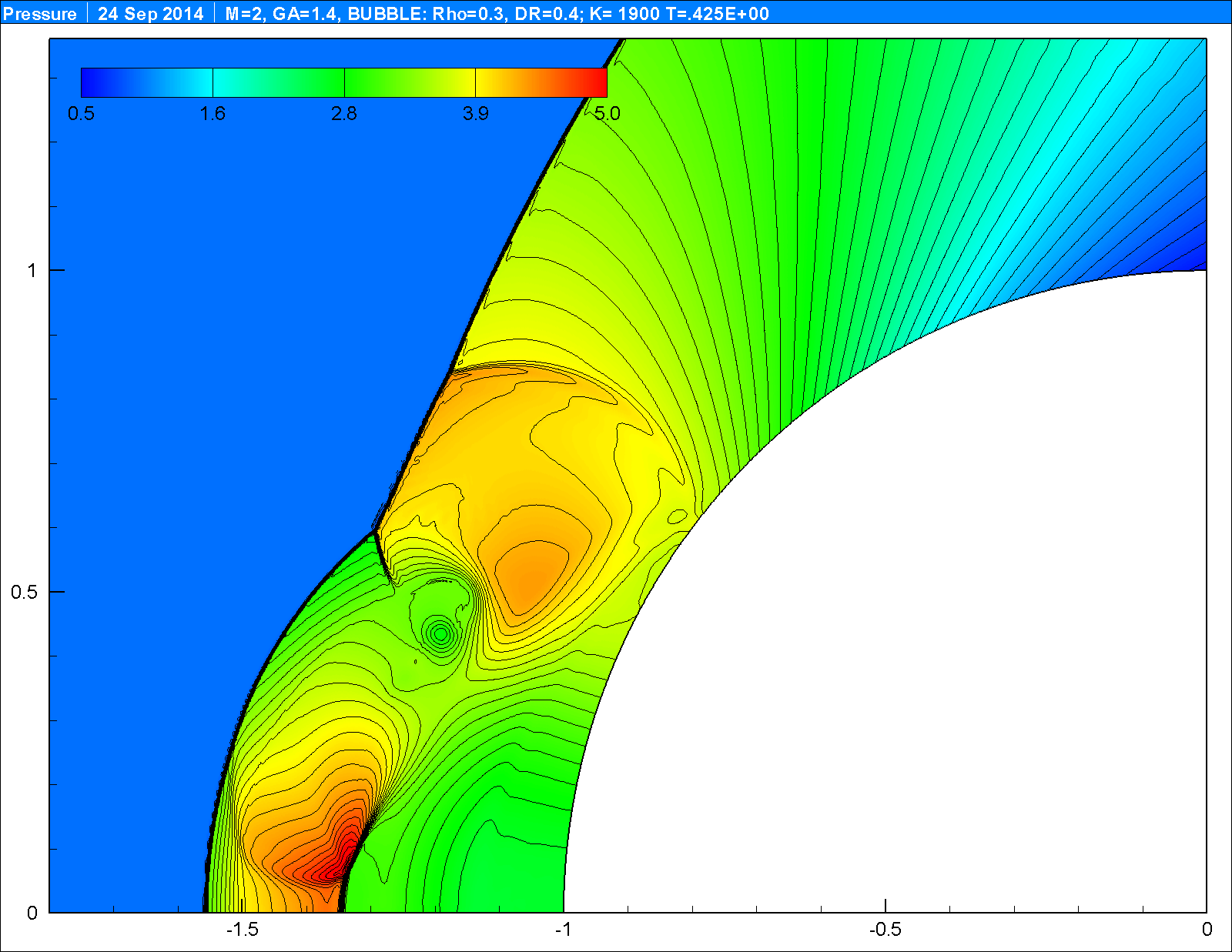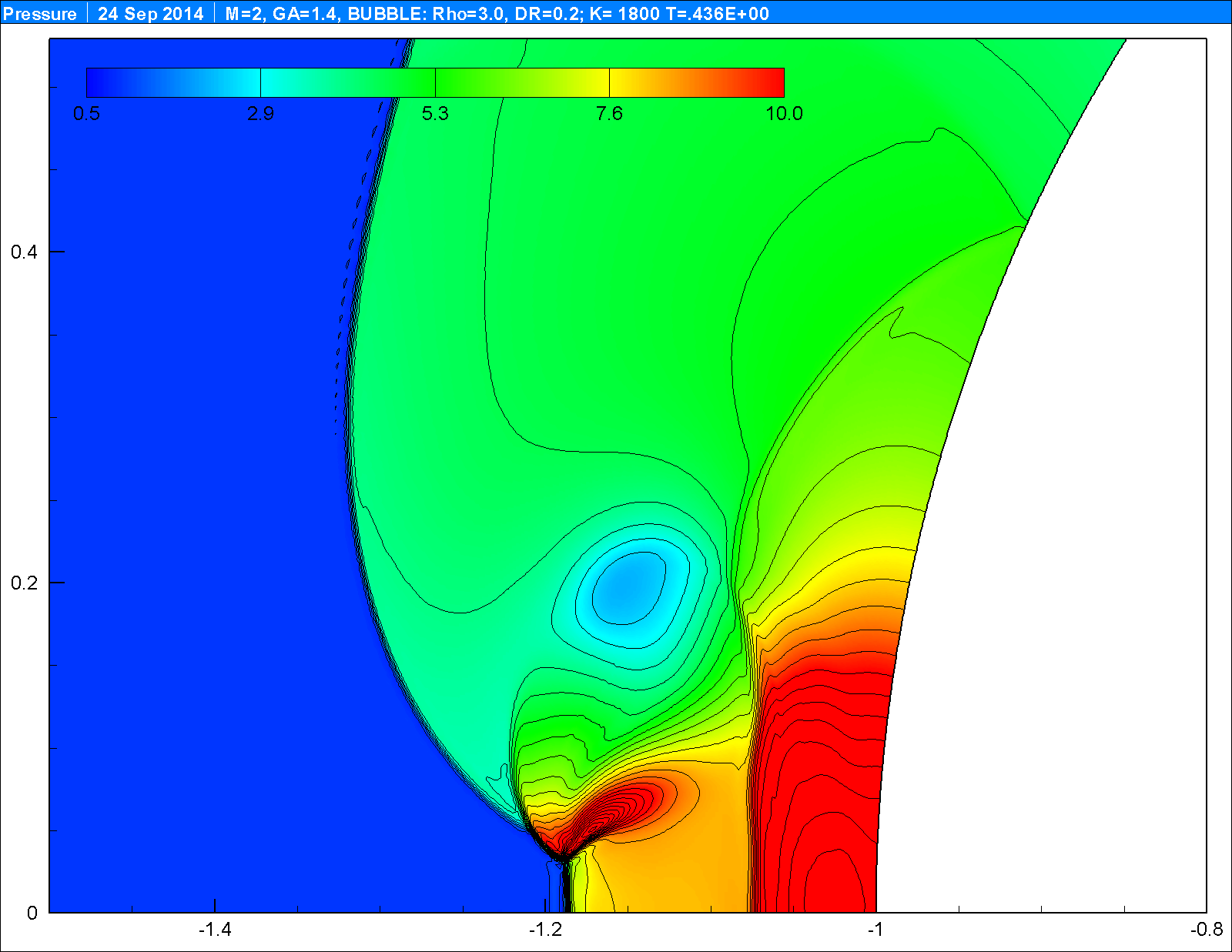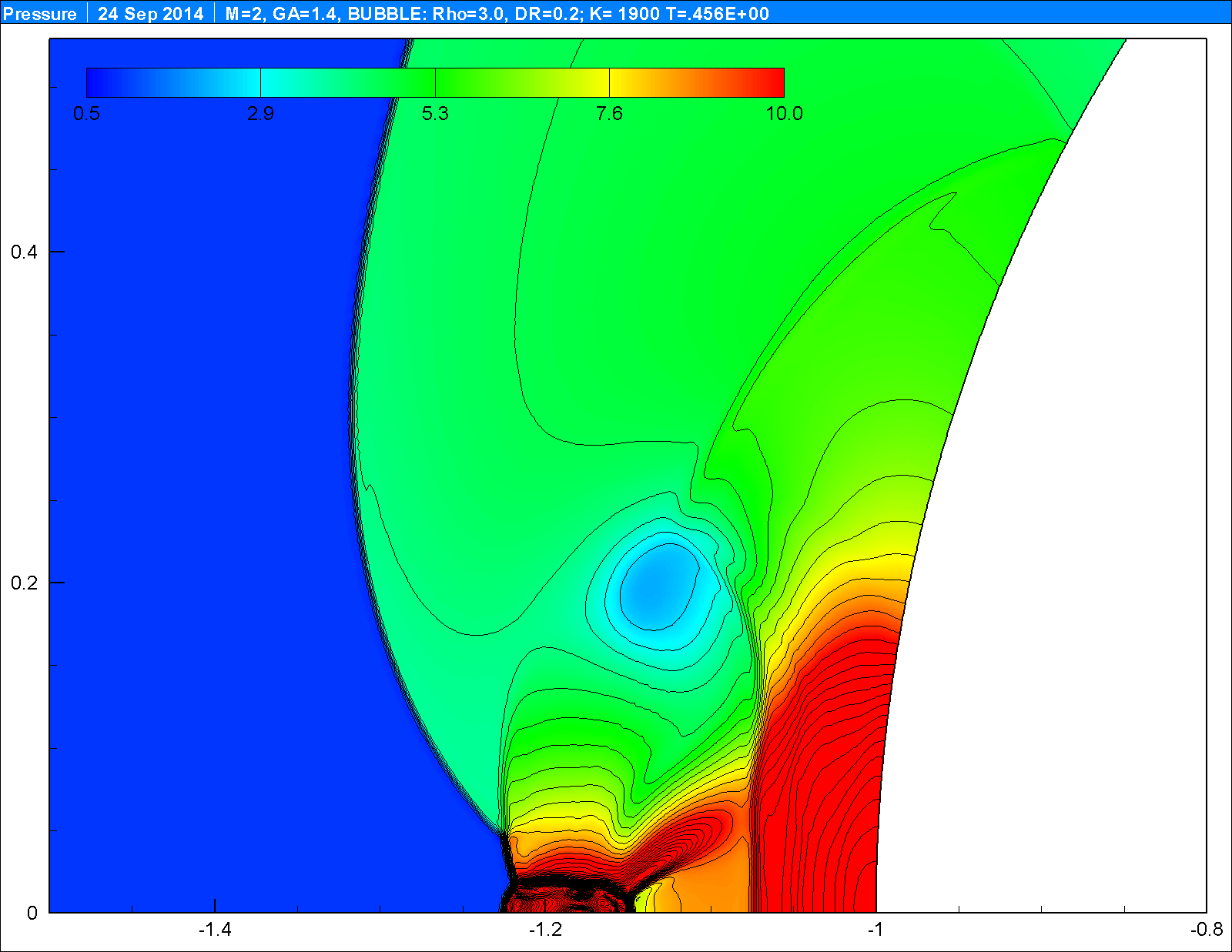
Shock Focusing Effect for the Interaction of Blunt Bodies with Gas Bubbles in a Supersonic Flow
|
|
Fig. 1 Pressure oscillogram for the stagnation point of a sphere for different cases of the interaction with low density (up) and high density (down) gas bubbles. |
Pressure oscillogram for the stagnation point of a sphere for different cases of the interaction with low density (up) and high density (down) gas bubbles are presented in Fig. 1. For low density gas bubbles the “pressure peak arising” effect is observed for gas bubbles of different size and shape (curves 1 – 4). For high density bubbles the effect depends on the bubble parameters. There is no effect in case of not enough large density ratio (curve 2) or for too large bubble (curve 4). But in some cases (curves 1, 3) the pressure increases dramatically.
The analysis of fast processes of shock focusing during the interaction is carried out. In case of a low density inhomogeneity the important factor for shock focusing effect is the geometrical shape of the inhomogeneity. There is no effect for the interaction of a sphere with an infinite low density layer. For spherical (or closed to spherical ellipsoidal) gas bubbles due to the curved shape of rear bubble interface an undisturbed incident flow density value restores on the periphery of the bow shock wave earlier than one near the symmetry axes. So the internal converging compression wave propagating in a shock layer towards the symmetry axes appears. After the turnover of the compression wave the shock focusing effect inside a small region of the symmetry axes is occurred (presented in Fig. 2). In case of a high density bubble initially the bow shock wave distance decreases inside the bubble due to the interaction and the bubble “breaks through” the shock layer. So the anomalous shock wave structure with a stem-like shock close to the symmetry axes and converging shocks on the periphery is composed. In this case the cumulation effect is a result of focusing of a strong converging bow shock wave (presented in Fig. 3).
|
Fig. 2 The shock focusing effect for the interaction of a sphere with a low density gas bubble: pressure isolines shortly before (up) and after (down) the focusing time moment. |
|
Fig. 3 The shock focusing effect for the interaction of a sphere with a high density gas bubble: pressure isolines shortly before (up) and after (down) the focusing time moment. |
Both for low density and high density bubbles the shock focusing effect leads to the sudden pressure and density increasing in a focusing region – in fact to the “explosion” inside a shock layer. The explosion wave accelerates the internal shock wave which propagates toward the sphere surface so that “pressure peak arising” effect is observed. Moreover in case of a high density bubble the deformed bubble is located inside a shock layer just near the surface of the sphere for the cumulation time moment. Actually there is the “throw out” of deformed high density bubble by the explosion wave so that the pressure on the body surface increases dramatically.
Therefore the shock focusing effect is the peculiar feature of the interaction process of blunt bodies with both low and high density gas bubbles. The consequence of this effect is fast explosion type phenomena inside a shock layer which leads to pressure and density increasing in a focusing region and later to sudden pressure increasing on the body surface.
The research has been supported by the Russian Foundation for Basic Research (project 14-01-00891) and Russian Scientific Foundation (project 14-11-00773).
- Georgievskii P.Yu., Levin V.A. Unsteady Interaction of a Sphere with Atmospheric Temperature Inhomogeneity at Supersonic Speed // Fluid Dynamics. V. 28. No. 4 P. 568–574. DOI: 10.1007/BF01342694
- Georgievskii P. Yu, Levin V. A., Sutyrin O. G. Cumulation Effect upon the Interaction between a Shock and a Local Gas Region with Elevated or Lowered Density // Fluid Dynamics. 2011. V. 46. No. 6 P. 967–974. DOI: 10.1134/S0015462811060147
Powered by Eventact EMS





